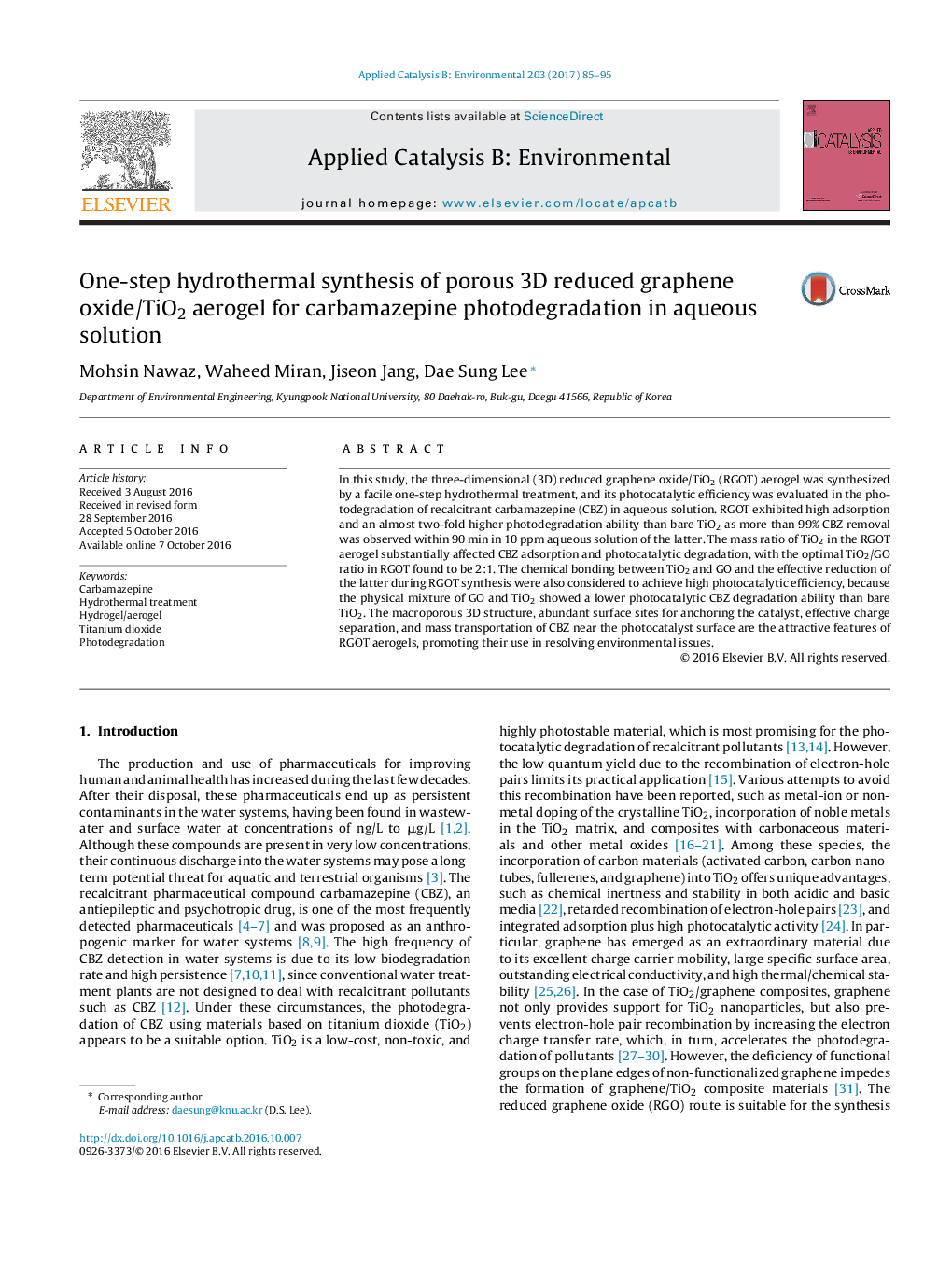| Article ID | Journal | Published Year | Pages | File Type |
|---|---|---|---|---|
| 6454424 | Applied Catalysis B: Environmental | 2017 | 11 Pages |
â¢3D reduced graphene oxide/TiO2 (RGOT) aerogel formation is successful.â¢Strong coupling between TiO2 and GO is a prerequisite for RGOT aerogel synthesis.â¢Chemically bonded RGOT aerogel is better than a physical mixture of TiO2 and GO.â¢RGOT (1:2) with a 1:2 mass ratio of TiO2 to GO gives higher photocatalytic activity.â¢CBZ photodegradation ability of RGOT (1:2) is two times higher than that of bare TiO2
In this study, the three-dimensional (3D) reduced graphene oxide/TiO2 (RGOT) aerogel was synthesized by a facile one-step hydrothermal treatment, and its photocatalytic efficiency was evaluated in the photodegradation of recalcitrant carbamazepine (CBZ) in aqueous solution. RGOT exhibited high adsorption and an almost two-fold higher photodegradation ability than bare TiO2 as more than 99% CBZ removal was observed within 90Â min in 10Â ppm aqueous solution of the latter. The mass ratio of TiO2 in the RGOT aerogel substantially affected CBZ adsorption and photocatalytic degradation, with the optimal TiO2/GO ratio in RGOT found to be 2:1. The chemical bonding between TiO2 and GO and the effective reduction of the latter during RGOT synthesis were also considered to achieve high photocatalytic efficiency, because the physical mixture of GO and TiO2 showed a lower photocatalytic CBZ degradation ability than bare TiO2. The macroporous 3D structure, abundant surface sites for anchoring the catalyst, effective charge separation, and mass transportation of CBZ near the photocatalyst surface are the attractive features of RGOT aerogels, promoting their use in resolving environmental issues.
Graphical abstractDownload high-res image (216KB)Download full-size image
